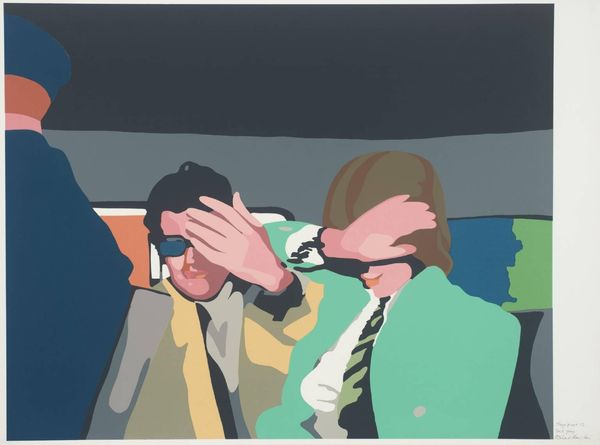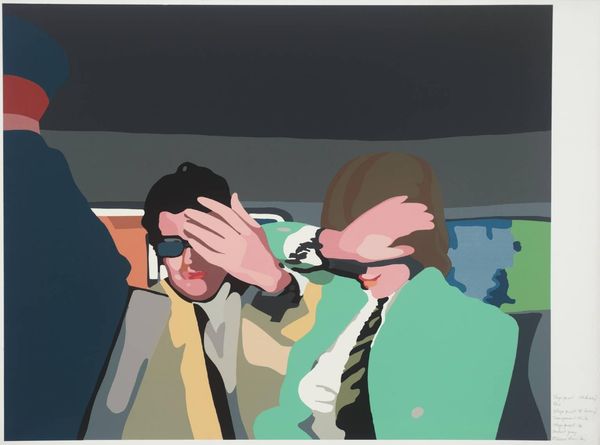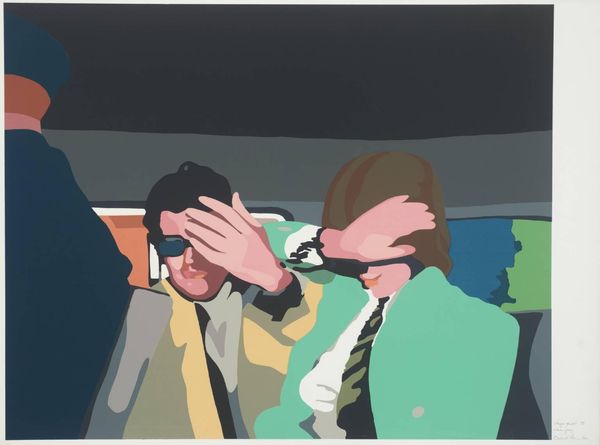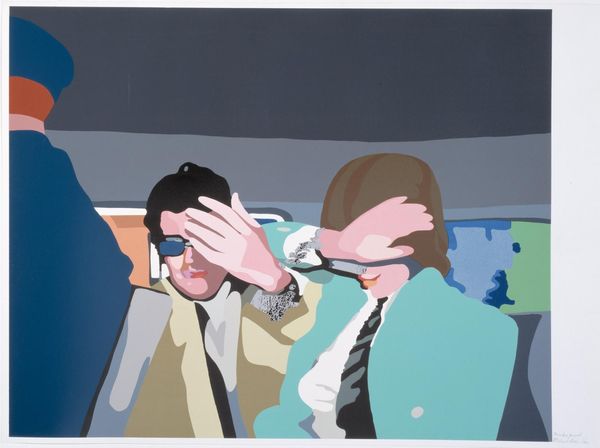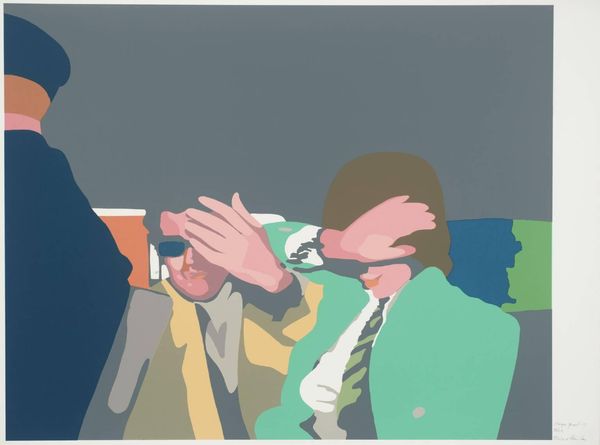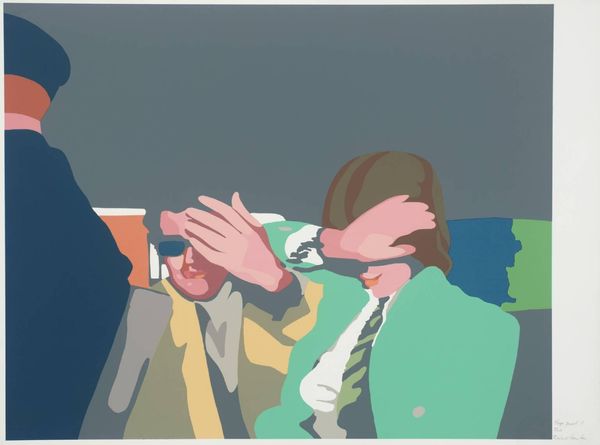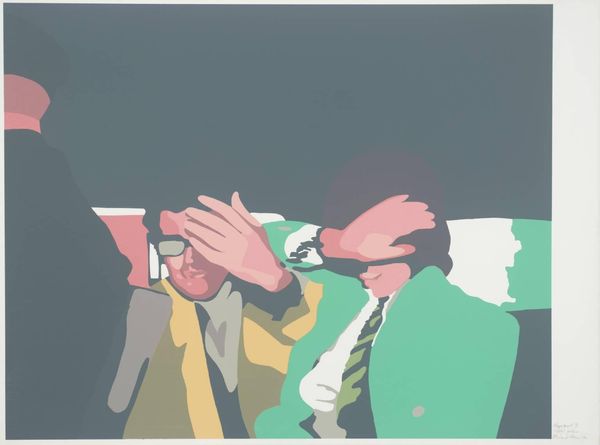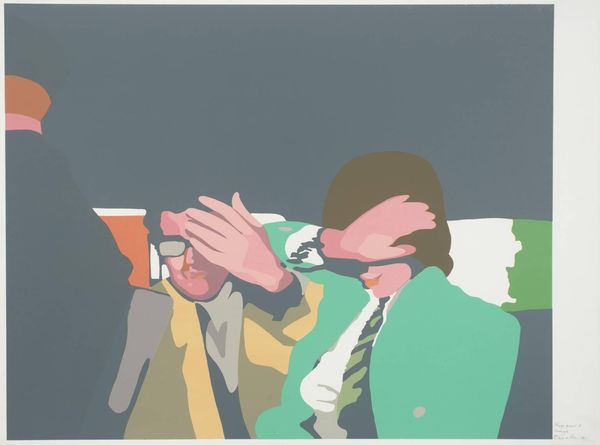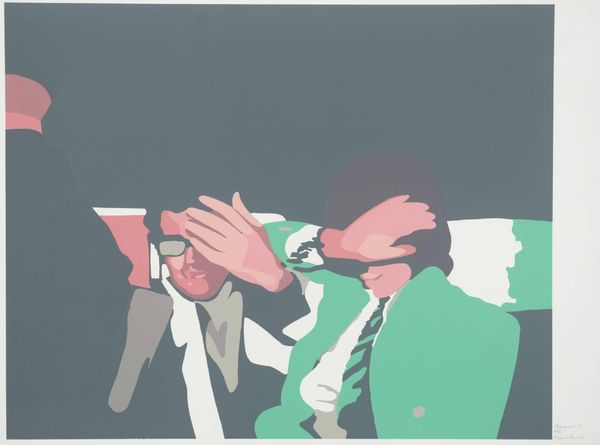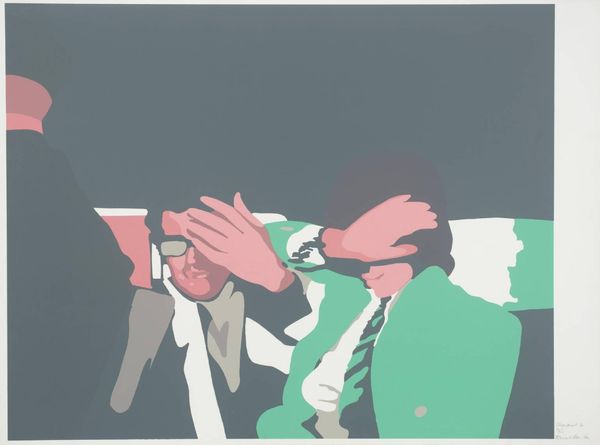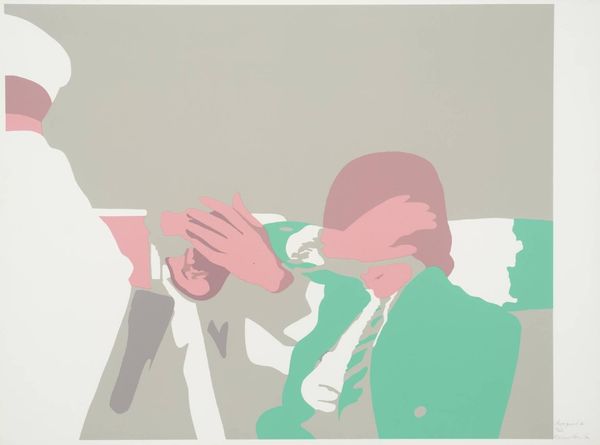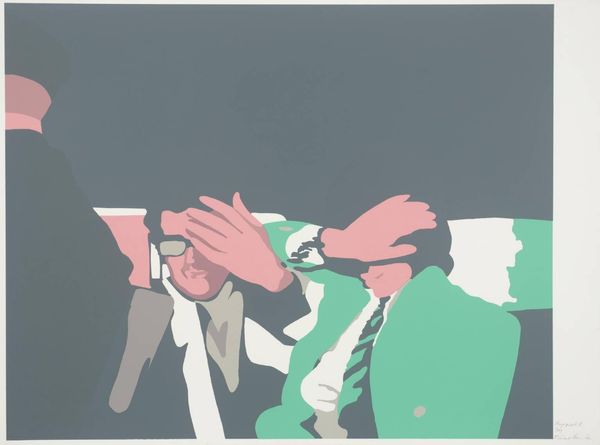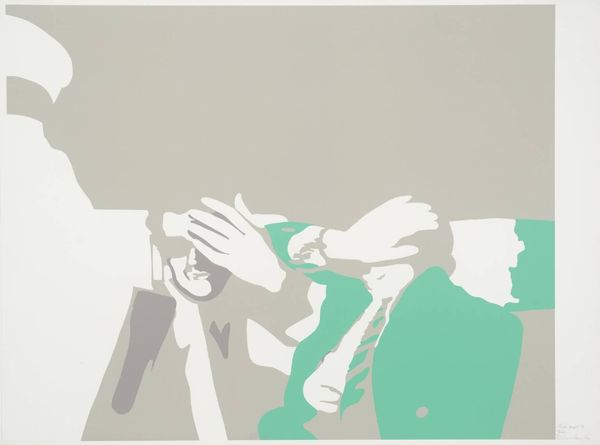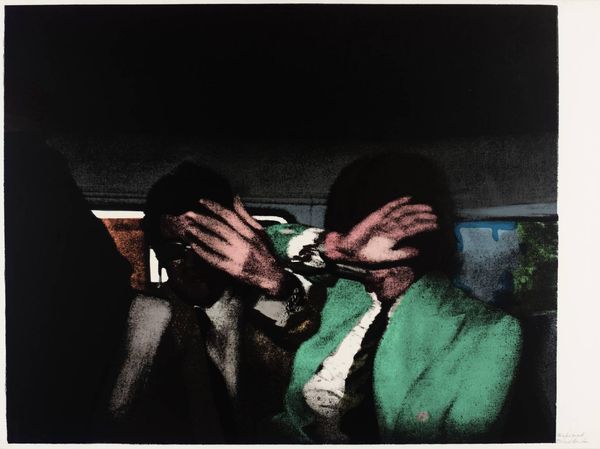
Dimensions: image: 682 x 857 mm
Copyright: © The estate of Richard Hamilton | CC-BY-NC-ND 4.0 DEED, Photo: Tate
Curator: Richard Hamilton’s "Stage Proof 17," from the Tate collection, presents a fascinating study of celebrity and the gaze. What strikes you about it? Editor: It feels so cool and detached, almost icy. The figures shielding their eyes create a barrier. I immediately think of paparazzi and the price of fame. Curator: Hamilton was deeply engaged with mass media and its impact on our perception of reality. He often used screen prints to explore these themes. There’s a starkness to the composition. Editor: Absolutely. The flattened planes of color and simplified forms add to that sense of distance. It's as if he's dissecting the image, pulling apart the layers of celebrity culture. Curator: He's playing with the idea of the image as commodity, something to be consumed and reproduced endlessly. It's a reflection on how we interact with images of public figures. Editor: It makes you wonder about the power dynamics at play here: Who is looking at whom, and what does it mean to look? The work definitely holds a critical lens to celebrity culture. Curator: Indeed, a provocative piece. Editor: An insightful look at how we consume images.
Comments
tate 8 months ago
⋮
http://www.tate.org.uk/art/artworks/hamilton-stage-proof-17-p02430
Join the conversation
Join millions of artists and users on Artera today and experience the ultimate creative platform.
tate 8 months ago
⋮
Release – Stage Proofs 1-13 and 16-19 (P02416-32; the series is incomplete) is a group of seventeen prints showing the process of building up colour to make the print Release (P04254). Each proof represents the successive addition of a screen, made from a hand-cut stencil, used to apply a particular colour. The completed print Release combines the seventeen colour screens, each used once, and the photographic black screen which has the texture of an imprint on canvas as well as the photographic halftone, used twice.
